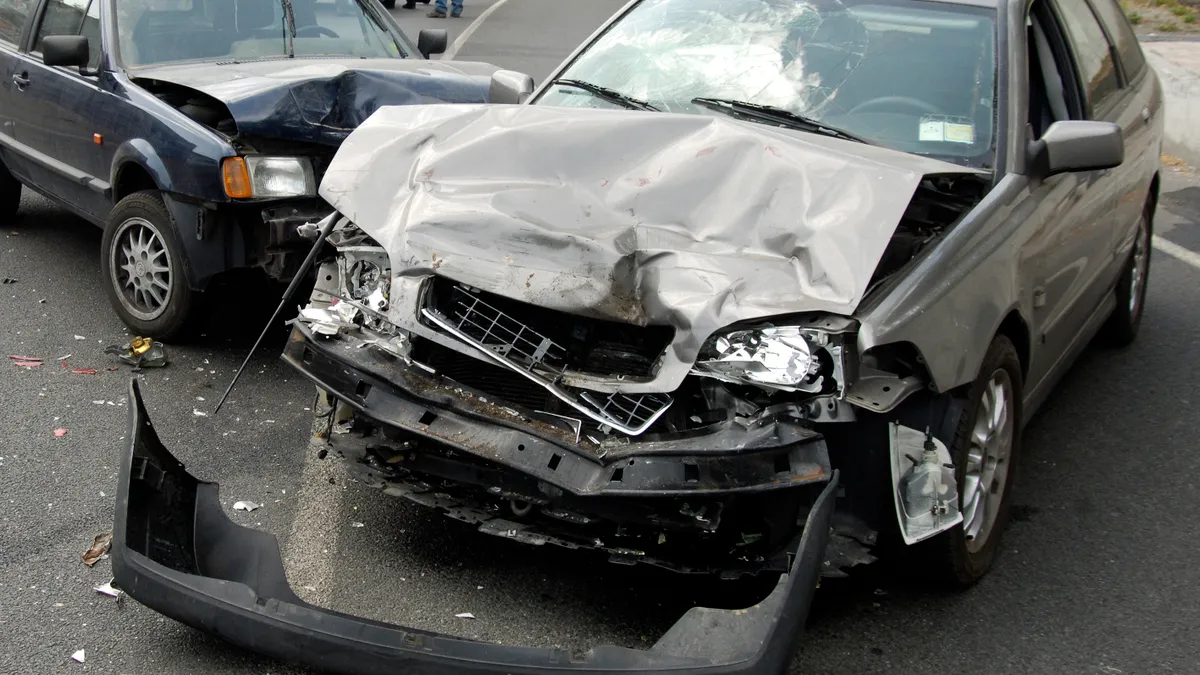Dive Brief:
- Traffic fatalities in the U.S. continued to surge during the first half of 2021, increasing 18.4% over the same period last year, leading to 20,160 deaths, according to a report issued by the National Highway Traffic Safety Administration (NHTSA). It's the largest number of projected fatalities in that time period since 2006.
- A companion NHTSA research note cited a rise in risky driving behaviors, including speeding and failure to use seat belts, along with alcohol and drug use, as contributing factors. Vehicle crashes became more severe beginning in the latter part of 2020, with more patients needing high-level trauma care.
- Transportation Secretary Pete Buttigieg announced last week that the USDOT will develop its first-ever National Roadway Safety Strategy. But traffic safety professionals differ on the best approach to reduce traffic fatalities. "We're all trying to figure out what we're going to do differently," said Jake Nelson, AAA director of traffic safety advocacy and research.
Dive Insight:
The largest-ever six month increase recorded in NHTSA’s Fatality Analysis Reporting System’s history, which dates back to 1975, did not come as a surprise. "We suspected and feared this might happen," said Cathy Chase, president of Advocates for Highway and Auto Safety, a D.C.-based lobbying group backed by property and casualty insurers along with law enforcement and public health organizations.
Chase said that when the pandemic began, some drivers took advantage of lightly-used roads to drive at faster speeds. "We feared that these behaviors would carry over once the road started becoming more populated, and that seems to have played out."
She sees automotive safety technology as a prime tool to reduce traffic fatalities. Features such as automatic emergency braking, lane departure warnings, lane centering, predictive cruise control and blind spot monitoring are already available on many new vehicles. But they are often high-priced options. "Every family should have the safest braking system, not just those who can afford it," said Chase.
According to the Insurance Institute for Highway Safety, forward collision warning systems that activate brakes automatically reduce front-to-rear collisions by 50%. Lane departure warning systems and blind spot detection systems can reduce injuries in related crashes by more than 20%.
The auto industry argues that adding those safety features to all cars would be costly, said Chase. However, "once they're required as standard equipment, because of the economies of scale, the costs go down," she said.
However, Nelson noted that some drivers disable these features on the cars they own. "They're annoyed by the notifications, the beeps and buzzers," he said.
Traffic is now returning. According to preliminary data from the Federal Highway Administration, vehicle miles traveled (VMT) in the first half of 2021 increased by 13%. At the same time, the fatality rate for the first half of the year rose to 1.34 deaths per 100 million VMT, up from 1.28 fatalities per 100 million VMT in the same period last year.
Jonathan Stiles, an urban researcher at Florida Atlantic University, conducted a peer-reviewed study last year that looked at crash data in Franklin County, Ohio, which includes the city of Columbus, during the early days of the pandemic. His research confirmed that lower traffic volumes correlated with more severe vehicle crashes. With fewer cars on the road, more people were speeding—both driving over the speed limit and driving faster than normal, but within the speed limit.
NHTSA reported that beginning in March 2020, drivers engaged in riskier behaviors. Exceeding the posted speed limit by more than 20 mph became more common. Fewer crash victims wore their seat belts. In one study cited by the NHTSA, almost two-thirds of seriously or fatally injured drivers tested positive for alcohol, marijuana or opioids.
On the same day the NHTSA data was published, AAA released its own survey. Contrary to the evidence reported by NHTSA, self-reported data from drivers showed a reduction in dangerous driving habits such as speeding, driving impaired or driving while holding a cell phone.
"When you compare what motorists are telling us to what the crash statistics that NHTSA just released are showing, there's some incongruency," said Nelson. He added that the AAA Foundation for Traffic Safety is now analyzing data now to see where the discrepancy lies, but he thinks it may have to do with the drivers themselves: "The drivers on the road who continue to engage in these risky behaviors are causing the majority of the deaths."
AAA urges adoption of a Safe System approach, which Nelson says has been proven in other developed countries. The National Transportation Safety Board (NTSB) defines this approach as focusing on crash severity rather than crash reduction.
Nelson explained, "We assume that crashes are probably going to happen, but we want to make them less severe and less likely to cause fatalities when they do occur." He pointed to roadway features such as medians to prevent head-on collisions and replacing intersections with traffic circles to reduce T-bone accidents. Federal funds provided to states should be tied to employment of Safe System practices, said Nelson.
The National Roadway Safety Strategy being developed at the Department of Transportation will be based on the Safe System approach. At the same time, the Federal Highway Administration (FHA) issued a list of what it calls "proven safety countermeasures." The FHA has also targeted 15 states and Puerto Rico—which together account for half of U.S. road deaths—for help in reducing traffic fatalities.
But Chase said, "There's a level of frustration in the highway safety community. Numerous administrations have released plans. It's not a problem of having a plan. It's a problem of lack of implementation."
There’s a role for both advanced technology and better policies in the effort to lower fatalities among drivers, passengers, pedestrians, and other road users.
"Big changes have to happen if we're going to turn this around," said Nelson. "If ever there was a time, now's the time. Everyone is on high alert."












